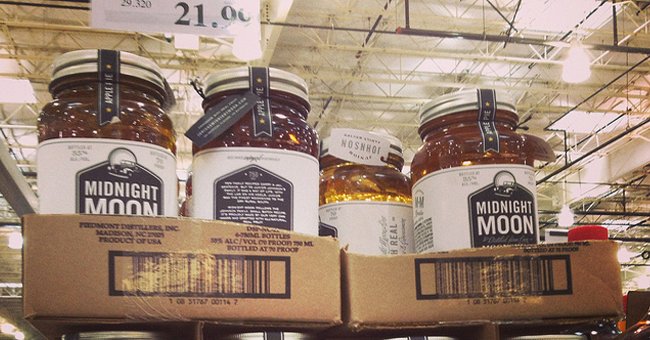Generally known as an incredibly high-proof, illicitly produced alcohol, moonshine was once only in the purview of rural Americans, particularly those in Appalachia. Within the last decade, however, moonshine has entered the mainstream in a major way, being produced in above-ground distilleries and available for purchase in liquor stores and bars across the country. What was once only attainable through furtive means is now so commercial, you can purchase it at Costco.
When it comes to spirits, the term “moonshine” itself is arguably one of the most charged in the industry. While absinthe shares a similarly dangerous reputation, it has an artistic, bohemian connotation. Conversely, mentions of moonshine conjure images of lawless hillbillies, drunken shenanigans, and the threat of injuries or fatalities from consuming a “bad batch.”
The act of referring to a legal product as “moonshine” has caused some folks, especially rural Southerners with ties to the libation, to question whether or not store-bought liquor can really be called moonshine—a product whose very name references the roots of its illegal production (as it was made in the woods by the light of the moon to avoid detection).
“Moonshine, by definition, is any high proof spirit that’s illegally distilled,” says Nicole Pearlman of Ole Smoky Distillery in Gatlinburg, Tennessee — the first legal moonshine distillery in a state known for its history of moonshine production. “It’s a term that’s generally applied to any alcohol that was made illegally. When you break it down, moonshine is really just a high-proof spirit. What sets us apart from illegally produced moonshine made by individuals is that it’s made in a very regimented way, based on a 200-year-old family recipe; it stays true to roots. It’s just moonshine.”
According to a 71-year-old veteran moonshiner from Wilkes County, North Carolina (once known as the moonshine capital of the world) who agreed to speak with me on the condition of anonymity, commercial moonshine is not authentic moonshine. “I don’t care how standardized things are,” he said. “That’s part of what makes moonshine ‘moonshine.’ Each batch varies. Plus, you make it with the purest, coldest mountain water you can find,” he continues, “not water you buy from the store. No real moonshiner accepts store-bought as the real thing.”
Sarah LeRoy, of Piedmont Distillery in Madison, North Carolina, is familiar with the argument. “I’ve heard people say our products are not real moonshine,” she says. “But that’s based on a technical definition of illegality. Technically, that’s true,” she concedes. “Technically, it’s not a tax-based liquor. But it’s not just a technical term. Moonshine is a cultural term,” she says. “It’s a process more than a legal status. It’s an experience of the liquor. For people like myself who grew up around it, it was always around. You didn’t think much about it because it was normal for it to be there. It was a very social experience,” LeRoy recalls. “There was always a jar of it being passed around and shared. That’s what we strive to do for our customers, to try and replicate the product experience. You sit and pass it around and talk. There’s an emotional side to this product’s story, and I think that’s what people are looking to experience when they drink our moonshine.”
In Pearlman’s experience, the argument about authenticity is not universal. “I don’t really get the ‘real moonshine’ argument outside the South,” she says. “I get ‘Is it going to kill you? It is illegal?’ People think it’s fun, it’s different, it’s exciting. Our product is an homage to the brand and to the history of moonshine. Ultimately, what I think people like about it is that it’s accessible and fun, and that you don’t have to go to the backwoods to enjoy it,” she says.
Interestingly, the moonshiner I spoke with dismissed talk of moonshine being potentially fatal due its production. “That’s something people came up with to discredit the makers,” he said. “Let me ask you this: When something has gone bad, can you smell it? Would you eat or drink something that smelled bad? Out of all the batches I’ve made, all the folks I’ve seen drinking it, the worst I ever saw was a boy who drank some of what the rest of us knowed was bad and had to go to the doctor,” he recalls. “But he didn’t die. He did get sicker than a dog, though.”
According to this moonshiner, tales of fatally bad moonshine are vastly overrated and perpetuated by outsiders to delegitimize both Southerners and this particular Southern artform. “All of this has to do with money. These arguments came about because moonshine is a product that doesn’t, or didn’t, get taxed. The government got mad that they were missing out on good money, and they spread around the idea that fools make it and it’s unsafe. But it’s no more unsafe than anything else anyone makes,” he concludes.
What remains as clear as the purest moonshine is this: moonshine’s popularity isn’t diminishing. Like every other spirit, moonshine has a unique history and heritage, and is evolving to find its place in today’s world. Whether it comes from deep in a mountain holler or a legitimate distillery, people will be passing the jar around for a long time to come.





